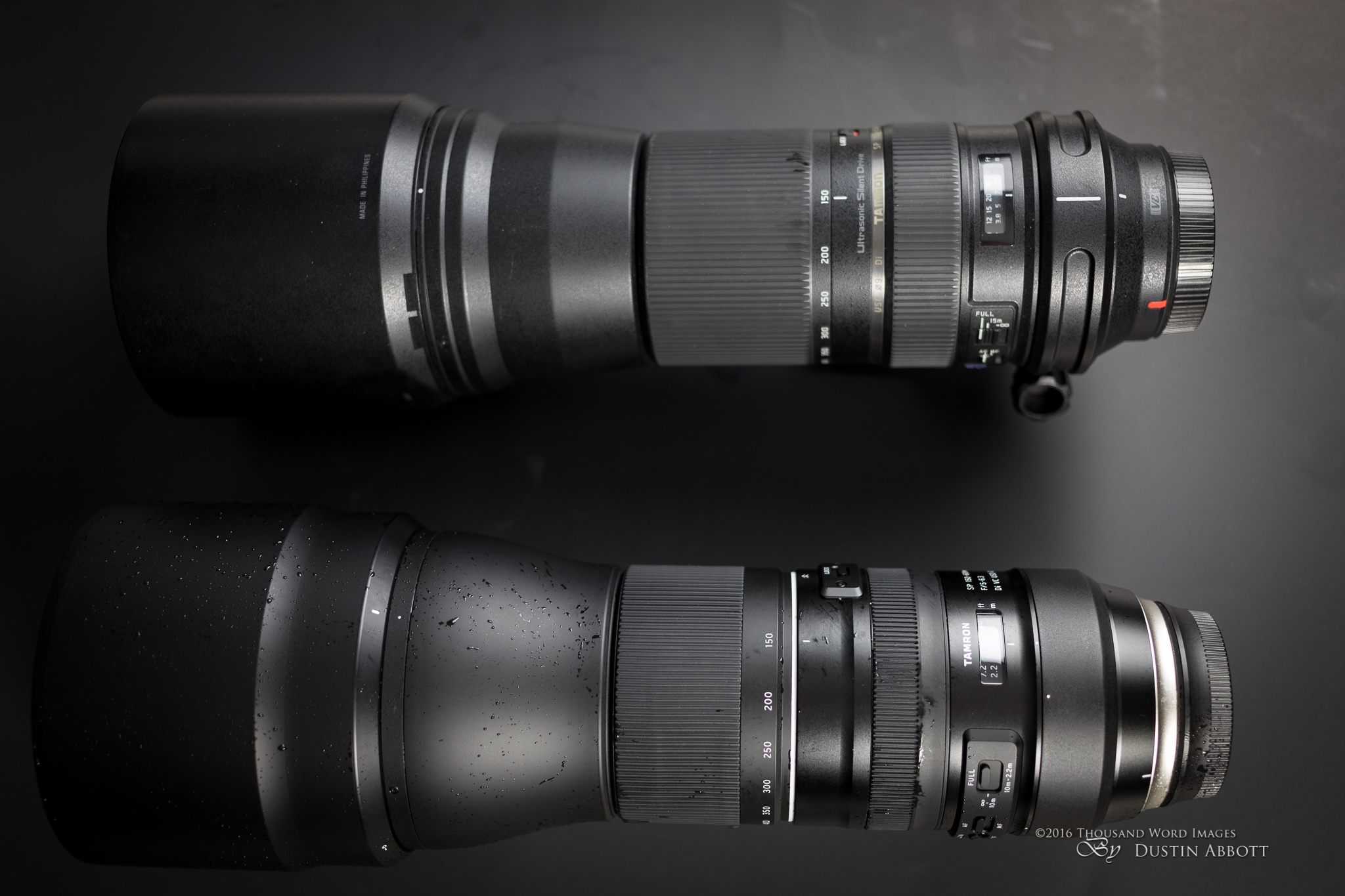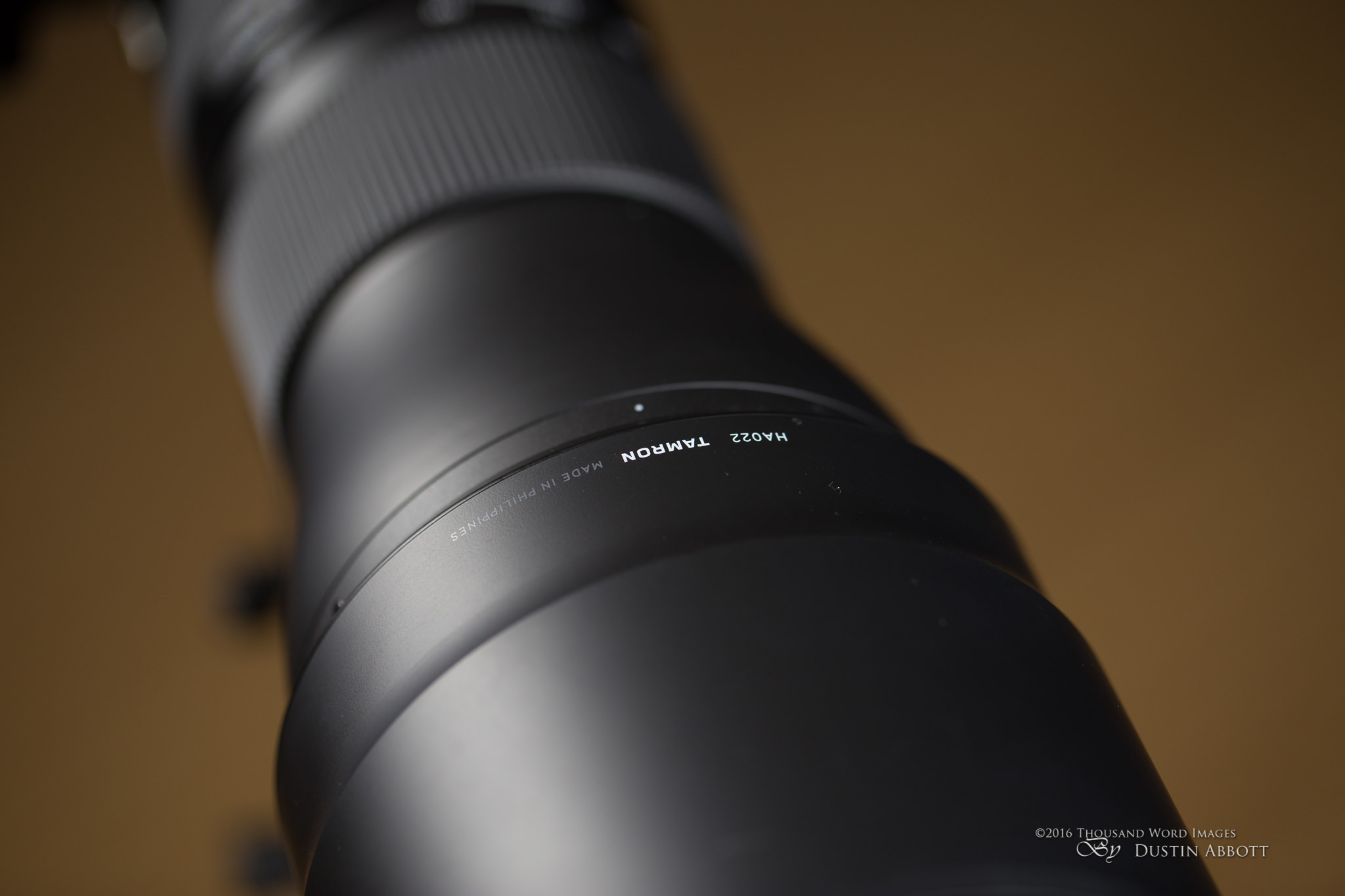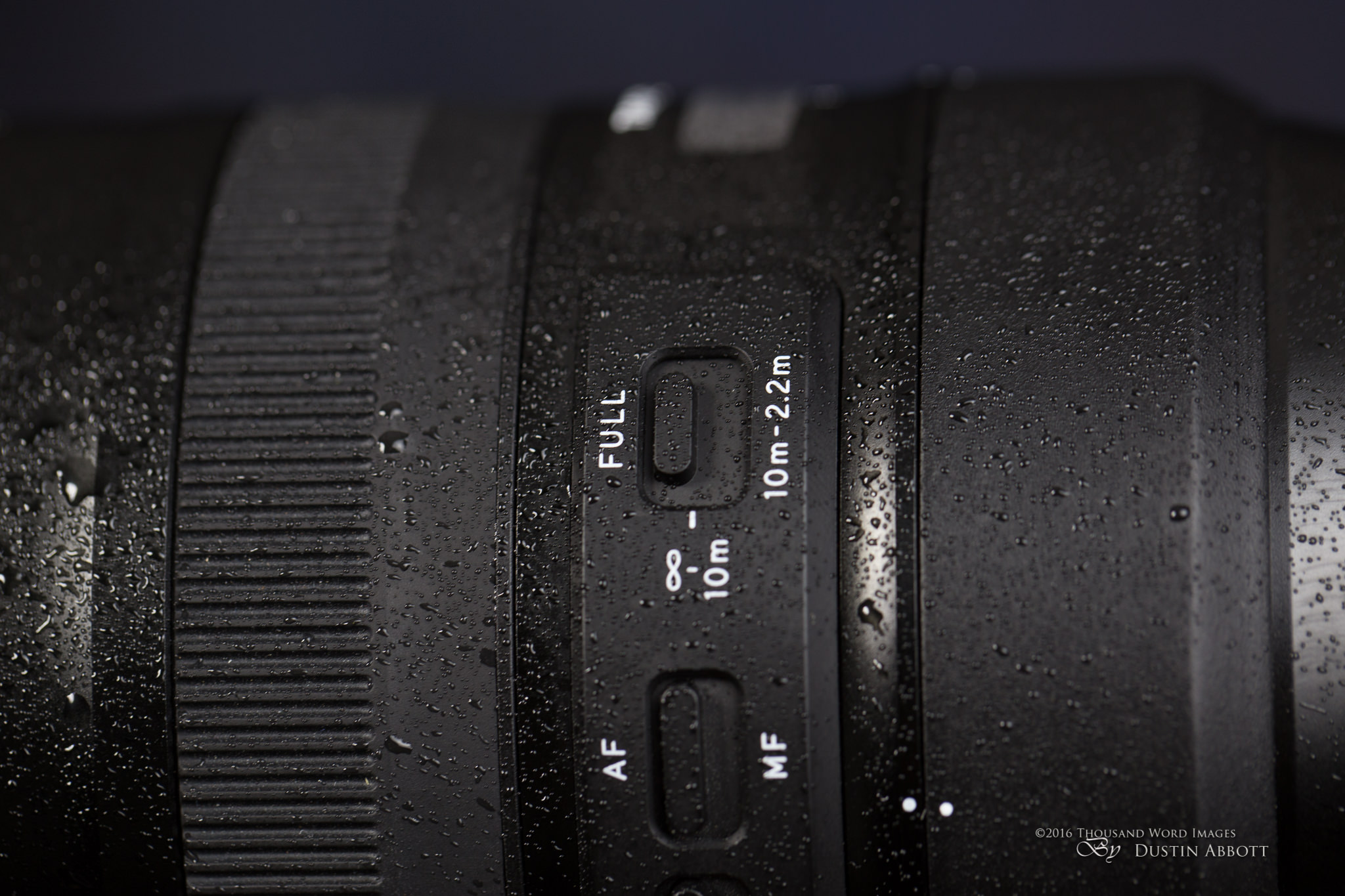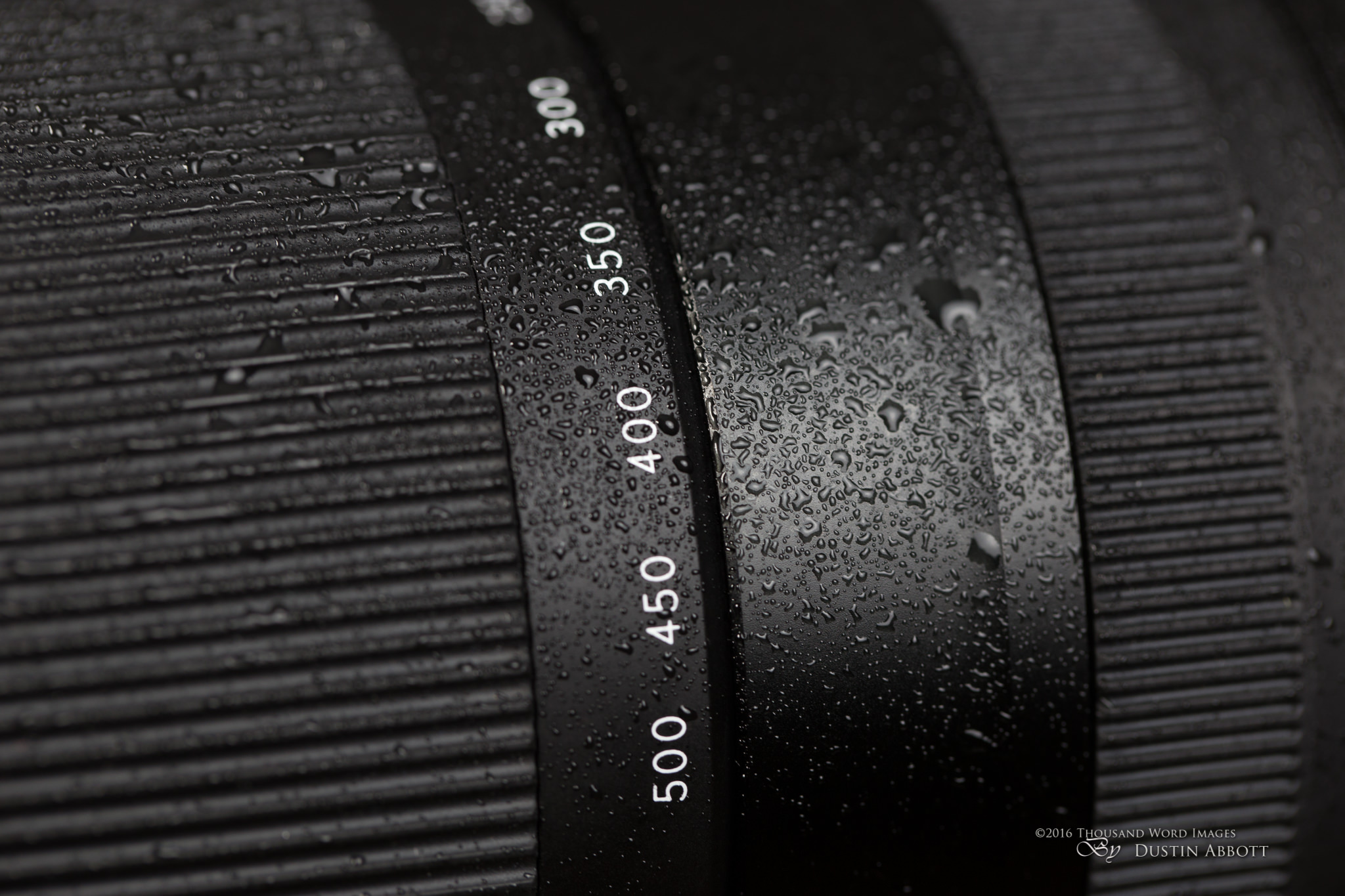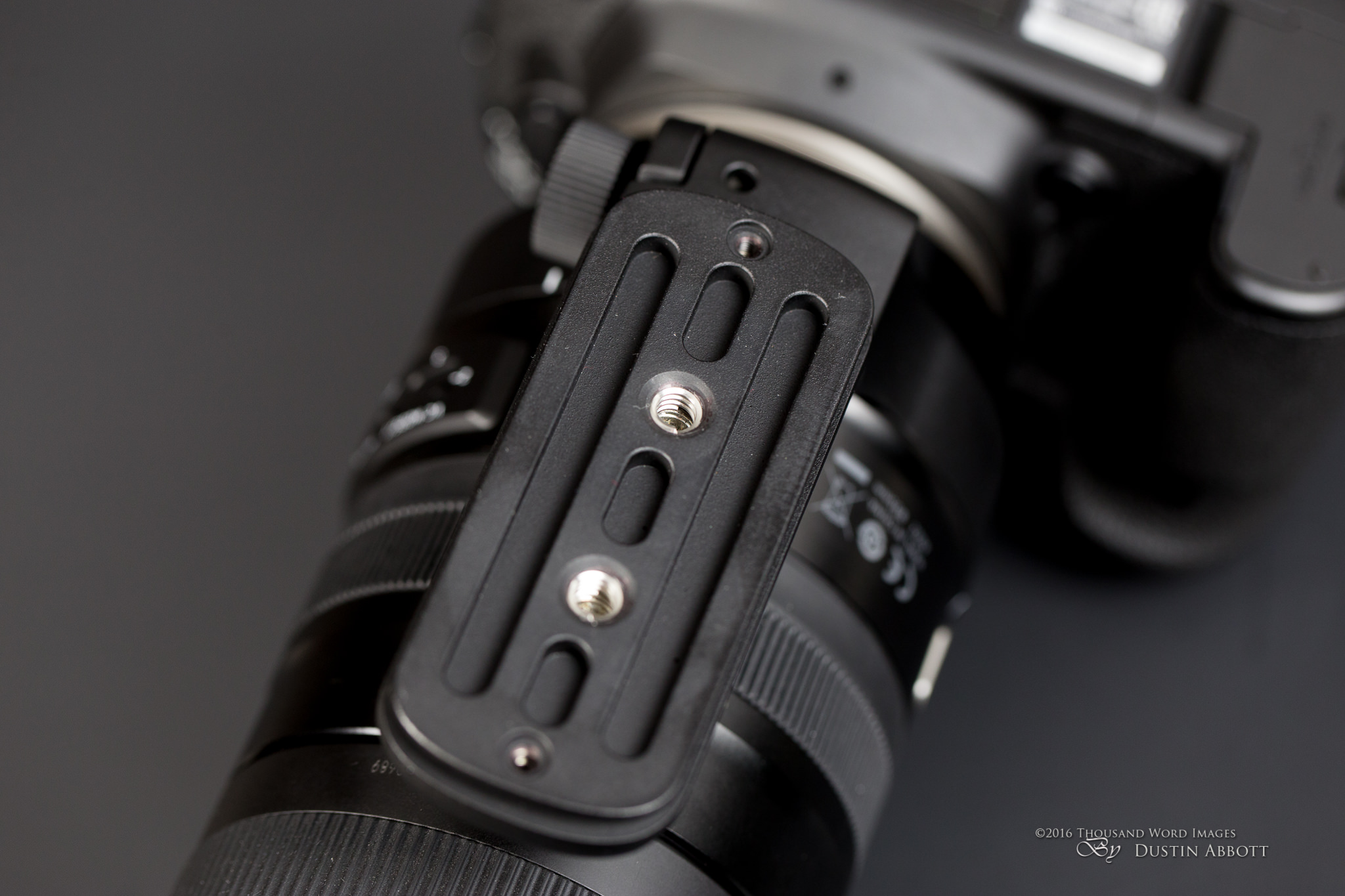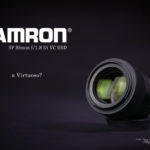The first generation of Tamron’s affordable supertelephoto zoom took the world by storm when it was released less than three years ago. Never before had the market seen such incredible reach (up to 600mm on a full frame DSLR) in such an affordable, well executed package. The lens wasn’t without faults, but even when later competitors were released from Sigma, Nikon, and Canon it demonstrated that it could hold its own. Tamron caught my attention when they announced a G2 (2nd Generation) version of the lens. The G2 gives the lens the beautiful new SP design language including a better build and weather sealing. It addresses a number of the handling issues of the first lens and promises on paper to improve pretty much everything about the first lens. Can the Tamron SP 150-600mm f/5-6.3 Di VC USD G2 deliver on its spec list promise? I got my hands on both a first and second generation 150-600 VC and put them to the test. We’re going to discover whether or not the 150-600 G2 is a worthy upgrade.
Prefer to watch your reviews? Check out Parts 1 and 2 of my review below:
Check me out on:Google+: | Facebook: | Twitter: | Flickr: | 500px: | Sign Up for My Newsletter :
My Reviews of all the Players:
Canon EF 100-400mm f/4.5-5.6L IS II
Tamron SP 150-600mm f/5-6.3 Di VC USD (V1)
Sigma 150-600mm f/5.-6.3 OS HSM Contemporary
Sigma 150-600mm f/5.-6.3 OS HSM Sport
Serious Upgrades?
I reviewed the original Tamron 150-600 VC here, and it proved such a popular review that (at the time) it pretty much broke my website and made me invest some serious money to build a more robust site ready to handle the traffic. It was ample evidence that people were extremely interested in the “affordable reach” market. The original demand outstripped supply, and that lens has ended up in a lot of photographer’s kits. It beat Sigma to the market by a fair margin and thus enjoyed a lot of the early sales.
That lens has optically and functionally held its own even with a number of new releases since. While the Sigma variants (Sport and Contemporary) have both proven to be a little sharper at 600mm, the Tamron proves sharper at some other focus distances. For field use they all have very little variation. This article from LensRentals makes for an interesting read as it reinforces the point that while there are sharper options out there, they aren’t much sharper.
Tamron promised optical improvements in their press release that was sent to me, “Optical design refreshed to achieve even higher performance Three LD (Low Dispersion) lens elements completely eliminate axial and transverse chromatic aberrations. The design also features an upgraded optical construction (21 elements in 13 groups) and leverages improvements in manufacturing technology. As a result, the lens delivers high resolution, improved sharpness and overall better performance.”
In short, Tamron added one additional element to the optical formula. But there’s more to it than that, as I discovered when comparing the lenses head to head that the 150-600 G2 has a completely different rendering than the previous generation lens. This is definitely more than a minor tweak.
One weak point that Tamron has definitely addressed is the minimum focus distance, which I sometimes found a bit confining in the older version. It would focus down to about 8.9’/2.7m, but the 150-600 G2 will focus as close as 7.22’/2.2m. That is enough improve the maximum magnification ratio from 1:5 (0.20x magnification) on the old version to 1:3.9, or 0.256x magnification. That’s slightly over one quarter life size, and you are getting into the very useful range. Here’s a visual comparison at the difference in magnification.
You can shoot macro(ish) shots from over 7 feet away (now that is a nice working distance!!) and I found it easy to fill the frame with flowers or leaves. Be aware that depth of field at that minimum focus distance is a REALLY tiny 0.2”/5mm, and even stopped down to f/11 the depth of field is still under 9mm. I’d recommend a tripod and a lot of light to produce the best results. It’s not the easiest focal length to deal with for macro type shots (there’s a reason macro lenses AREN’T 600mm), but you can be rewarded with some nice results if you employ good technique.
Further helping is that the Focus Limiter switch has more (and better) options. The V1 of the lens had two positions: Full and 15m to Infinity. It had no option for close range shooting, and the 15m (nearly fifty feet) limiting position meant that you could easily miss shots where your subject moved a bit closer. The 150-600 G2 has three positions on the switch: Full, 10m to Infinity, and 2.2-10m. Furthermore, by using the Tap In Console, you can tweak all of these to your own liking. The compatibility with the Tap In Console is a big deal, as it eliminates one of the key advantages that the Sigma lenses held over this one. The 150-600 G2 is Tamron’s first zoom lens to be compatible with the Tap In. Here’s a look at the different screens as they apply to the 150-600 G2 (scroll to see more screens from the Tap In):
Build Improvements
Best to get the bad news out of the way: the 150-600 G2 has put on a little bit of weight. The A011 (First Generation lens) weighed in at 4.3lb/1950g, while the new version weighs 4.42lb/2010g. The reality is that this isn’t really enough of a weight gain for me to notice when switching from one to the other. The 150-600 G2 significantly undercuts the weight of the 6.3lb/2860g Sigma Sport. A friend who owns the A011 handled the G2 and asked if it was lighter, so that tells you that the weight gain definitely isn’t very noticeable. Handholding the 150-600 G2 is a piece of cake compared to the Sigma Sport as the Sport is a very front heavy lens that makes supporting the big front element (which ends up pretty far from your body at 600mm) quite a challenge (and I’m fit!) The bad news isn’t really so bad here. This isn’t a light lens, but it is fairly easy to handheld, and I suspect it will be used that way by a lot of photographers. I used it that way almost exclusively save some controlled tests and moon shots.
For that little bit of weight gain, however, you get a lens that is much better in every detail, from the build quality to the tactile feel of the materials. The A011 had a pretty decent build, but some of the materials here and there felt a little “plasticky”. Most notable was the lens hood. While the lens hood is still technically made of plastic, it is now a much more premium “soft-touch” feel that has a nice rubberized transition at the mount that feels a lot like the Sigma ART series. Those kinds of little touches are the kind that I’ve strongly praised, so perhaps Tamron was listening. The primary barrel material is a lightweight metal similar to the SP primes with a nice satin finish. All of the surfaces of the lens have a much nicer, premium feel to them, and while the lens doesn’t have the military grade build of the Sigma 150-600 Sport there is no question that this is a very nice lens that has moved upscale. I think many shooters will find this a nice compromise between weight and sturdiness.
All of the switches are much improved. Compared side by side the G2 switches all have a much nice, more definite feel. A lot of thought has been put into the tactile responses, and it shows in the quality action of the switches.
The zoom and focus rings both have a nicer feel in both the materials and in their actions. I particularly noted the improvement to the smoothness of the zoom action. The barrel extends smoothly with very consistent damping throughout the zoom range. I found that the A011 could sometimes have sticking points in the zoom action where more effort was required. The consistent damping in the zoom ring will help a lot for those that want to use the lens for shooting video, and I also noted that it helped eliminate zoom creep when the lens is pointed down.
It is actually on the topic of zoom creep (caused by the weight of the front element pulling the lens towards maximum zoom when the lens is pointed down) where one of the most notable advances has happened. The A0011 had a traditional zoom lock switch, but it could only be engaged at the fully retracted (150mm) and 400mm positions. The 150-600 G2 version of this lens incorporates what Tamron calls a FLEX ZOOM LOCK mechanism to permit locking the zoom position at any focal length. If you have ever shot a Tokina lens that uses a clutch mechanism to switch between AF and MF mode you will have a good sense of how this works. The zoom ring can be moved forward which engages a friction mechanism that holds the lens at whatever zoom position it is at. Simply pull the clutch mechanism (zoom ring) back and it releases. In field shooting it is much quicker and more intuitive to use the new Flex Zoom lock than the traditional lock switch (which is still retained if you prefer that way of locking the lens). It was the friction ring on the Canon 100-400L II that was one of the selling points for me, and the 150-600 G2 has moved much closer to that style with the Flex Zoom Lock.
One other complaint for some shooters was that the A0011’s tripod foot wasn’t compatible with Arca-Swiss style plates. On the plus side was the fact that the tripod collar could be both rotated and removed. The 150-600 G2 has a removable rotating tripod collar that features an Arca-Swiss type compatible foot which helps with using the lens atop a tripod or monopod. One more box checked.
Both versions of the lens have a large 95mm filter thread (expensive), but the Sigma Contemporary versions shares that size and the Sport moves up to an even more massive 105mm filter thread. You can’t compete with physics. If you decide to forego the front filter you will be happy to find that an expensive fluorine coating has also been applied to the front lens element to protect against dust, dirt, and smearing. The weather sealing this time around is far more robust, with a number of internal seals at key points to prevent the intrusion of dust and moisture. This compliments a rear gasket at the lens mount and coatings on the exposed elements.
Both versions have a nine bladed aperture, though the new version emphasizes the “rounded” shape of the aperture blades. The bokeh quality is noticeably softer with less hard edges when compared to the A011, although I find that I still prefer the bokeh quality from the Canon 100-400L II. At certain distances I still see a little “busyness” in the bokeh quality, although most of the time the bokeh looks quite lovely.
An electromagnetic diaphragm is used for more precise and consistent exposure control, especially when shooting at high continuous shooting rates.
All in all, the G2 (A022) shows that Tamron has been listening to the feedback of photographers and they have addressed pretty much every complaint I’ve heard about the lens. In short, the Tamron SP 150-600mm f/5-6.3 Di VC USD G2 is improved in basically every metric.
That’s not to say that everything is perfect. I didn’t feel that the VC mechanism on the 150-600 G2 that I was reviewing was operating within spec. It caused a little “jumping” in the viewfinder and didn’t seem to work as effectively as the A011 I had for comparison. All reports indicate that the VC should be MORE effective on the G2, not less. I’ve asked for a different copy to be sent to me for review in a few weeks, where I’ll review that portion again as well as test the lens on a crop sensor body (my review period was too short to cover everything I wanted to this time). I bring this up to say that Tamron still has a few glitches in the manufacturing process, though I’ve had a good experience with them listening to my personal concerns and working to get them fixed. Like the previous generation the lens is designed in Japan, manufactured in China (save the lens hood, which is manufactured in the Philippines), and distributed to me in Canada. Globalism indeed.
VC and USD
These have become two of Tamron’s modern acronyms. VC stands for Vibration Compensation, Tamron’s image stabilization system, while USD refers to the ring-type Ultrasonic Silent Drive autofocus motor. Both have received some love in the G2 version.
When I compared the VC of the A011 with the Canon 100-400L II, I found that I preferred the behavior of the Canon Image Stabilization. It provided the more stable viewfinder, even when I added a 1.4x teleconverter into the mix. The Tamron only had a VC ON/OFF switch, with no external switches for customizing stabilization. Tamron added a “silent” panning mode through firmware, but you had to rely on the lens to detect panning motion and turn off that axis of stabilization. The new lens seriously ups the ante by giving you much more control over the VC behavior. Along with the ON/OFF switch there is now a second switch with three difference VC modes.
Mode 1 (standard) is the normal mode for most shooters, though you have the option to tweak that mode via the Tap In Console. You can switch it to a “Viewfinder Priority” mode which emphasizes smooth transitions to the VC coming on and off and also keeps it engaged longer. The main priority in this mode is for video use, and it will give smoother footage.
The Mode 2 position is for panning, and ensures that if you are tracking movement the VC won’t interfere while still helping to stabilize on the Y axis.
Mode 3 is what Tamron calls “Shutter Release Priority” mode. The VC doesn’t really impact the viewfinder in this mode but rather activates just as the shutter is being released. This might be a good option for those tracking birds in flight or other movement where you want complete freedom in the viewfinder but stability when you actually press the shutter. This seems like a good choice for when using a monopod, too, and Tamron actually claims about 2/3rds of a stop extra stabilization in this mode (up to 4.5 stops).
I noted above that I didn’t feel the VC on my review copy was working within spec, so I couldn’t really perceive an advantage in my testing and noted the VC behavior was abnormal (I’ve tested a LOT of lenses with Tamron’s VC). I’ll add new notes to this review when I’ve been able to use a second copy of the lens.
Tamron’s USD is a full ring-type autofocus motor which allows for full-time manual focus override. The behavior of the USD motor in the 150-600 G2 is clearly more refined. Focus is smoother, faster, and surer. Tamron has a new line of extenders (1.4x and 2.0x) that are compatible with this lens, but I have not been able to test them as of yet. I felt like there was clearly more speed on the long end (the area of need), and didn’t notice much hunting. In the field I found that I didn’t really think about autofocus, and that speaks a lot to me. It means that the AF was doing what it was supposed to. It is also worth nothing that I felt like the AF Servo tracking was better, too. I’m not really an experienced bird in flight shooter (don’t have the patience!), but was pleased with the results I got during a brief period of tracking some geese.
One of the headline improvements is that the 150-600 G2 is compatible with the Tap In Console which allows you to tweak the focus at 24 different points. For example, you can plug in values for minimum focus, medium distance, and infinity at 150mm, 200mm, 300mm, etc… Six different focal lengths with three distance values for each. While this represents some time invested, I’ve seen the dividends with other compatible lenses. You can dial in focus better than what I’ve seen with any other third party lens before. This is a significant upgrade and helps to get the most out of the newly improved optics (read on).
While the manual focus ring feel is improved on the G2, manual focusing is still challenging due to having a rather small focus throw. It’s easy to go past the point you want to focus on. One more reason to dial in that autofocus!
Optical Changes
The A011 really was an impressive lens for its price point. It gave very good image quality through 500mm, and while the 600mm position was softer (stopping down to f/8 improved things), the lens was capable of producing good images throughout the focal range. I’ve got a number of great images even at 600mm and f/6.3. But when the Sigma lenses were released it was clear that there was some room for improvement at 600mm, as they both resolved better there. The primary goal of the 150-600 G2 optically is to improve image quality on the longer end. I’m happy to state that they have largely succeeded. I strongly recommend that you watch this video segment to see the differences for yourself:
The new optical formula of the 150-600 G2 adds one additional element to the formula (now 21 elements in 13 groups). Tamron says, “Three low dispersion elements are incorporated to nearly eliminate both axial and transverse chromatic aberrations and color fringing for increased clarity and color fidelity throughout the zoom range. Both eBAND and BBAR coatings have been applied to suppress ghosting and lens flare for improved contrast when working in backlit conditions.” My testing indicates this combination is definitely making a difference.
Comparing the G2 to the A011 in a variety of situations I could definitely see some improved sharpness and contrast at 600mm, though at the cost of a bit of light transmission (undoubtedly the result of that extra element). Fine details and textures were noticeably better resolved thanks to the combination of improved resolution and contrast. The bottom line is that the 150-600 G2 is now capable of giving you even better image quality on the long and is completely usable wide open at 600mm. Here’s a few visual comparisons between the two versions that show the improvement in resolution and contrast:
As before some sharpness gain at 600mm can be realized by stepping down to f/8, though now both f/6.3 and f/8 performance is improved. One aside drawn from my direct comparison of the lenses: the gains in sharpness were not nearly as visible near minimum focus as they are at more typical shooting distances. I first tested at minimum focus distances and was unimpressed with gains (which were hardly perceptible). I was much more impressed when I compared the lenses at a more typical shooting distance of around 35 feet. The G2 was demonstrably sharper and more contrasty at this range (real world shooting). If what I saw in my review copy is representative of the lens in general this provides one significant challenge for Tamron: those that shoot test charts typically do so at shorter range. As result the gains of this lens may be less obvious in chart testing while very real in actual shooting.
More interesting is that the lenses have a very different color signature and rendering. The A011 produces a brighter image (better light transmission), but the 150-600 G2 produces a much more nuanced image that is arguably richer (this is a taste thing). I’m very experienced with Zeiss glass, and I would say the G2 trends more towards a Zeiss rendering.
I also noted that the bokeh quality has definitely improved in a direct head to head comparison. This comparison shows the very different signatures of the lenses, too (though some of this is due to changing light on a slightly stormy day).
I thought I saw a tiny bit more vignette in field use with the G2, but Bryan over at The Digital Picture found the opposite to be true when chart testing the lens, and I trust his results. Vignette is very low, with only a hair over one stop in the corners even wide open at 600mm. Nothing to be concerned about, and this advantage Tamron had over the Sigma lenses has grown even more.
Another significant advantage for the Tamron over the Sigma lenses was while they are all variable aperture lenses, the Tamron held onto the larger maximum aperture values longer. The Sigma SPORT was the surprising loser in this area despite its larger 105mm front element. It reached f/6.3 by a measly 321mm compared to 428mm for the Tamron. Does the G2 continue that positive trend? The answer is…mostly. Look at this chart:
| Lens | f/4.5 | f/5 | f/5.6 | f/6.3 |
| Sigma 150-600mm C | ———— | 150-179mm | 180-387mm | 388-600mm |
| Sigma 150-600mm SPORT | ———— | 150-183mm | 184-320mm | 321-600mm |
| Tamron 150-600 (A011) | ———— | 150-225mm | 226-427mm | 428-600mm |
| Tamron 150-600 G2 | ———— | 150-213mm | 214-427mm | 428-600mm |
| Canon 100-400L II | 100-134mm | 135-311mm | 312-400mm | ——— |
The 150-600 G2 has mostly held its own with one exception; it moves from f/5 to f/5.6 12mm earlier than the A011, though it continues to hold f/5.6 all the way to 427mm like the first version. There’s still a clear advantage for the Tamron lenses over the Sigmas in this area.
While the image quality improvement isn’t revolutionary it is certainly tangible, which means that the Tamron is now fully competitive with the Sigma lenses at 600mm and has possibly surpassed them. The bottom line: if you want better image quality at 600mm than what you will get from this lens you’ll have to invest in a supertelephoto that cost many thousands more.
It is imperative that you properly calibrate the focus on a lens like this. On a very rare occasion I test a lens that needs no calibration on my review body(s), but almost every lens I test benefits from at least some calibration of its focus. That’s particularly true with a lens with such a long focal length and thus such a shallow depth of field. If you find that you are disappointed with your sharpness from this lens, that is the first place you need to check. Here’s a clue on how to determine this: mount the lens on a tripod and use Live View focus (contrast AF). This requires no calibration, and will give you a good baseline for true image quality.
These successive photos at 500mm and then 600mm clearly demonstrate how sharp this lens can be.
It’s also capable of some gorgeous color:
I recommend that you spend a few minutes looking at the Lens Image Gallery to see what the lens is capable of.
Conclusion
I’ve reviewed every lens in Tamron’s new SP line that began with the 35/45mm primes and have been impressed with them all. None of them are perfect (very few lenses are), but I’ve found that they are offering a highly attractive blend of quality build and optics, great handling and feature list, and an excellent price point. I’m excited about the potential of Tamron expanding their newfound expertise to their lineup of premium zooms. My hope (and expectation) is that the 150-600 G2 will be followed up with G2 versions of the Tamron 24-70mm and 70-200mm f/2.8 zoom lenses, lenses that I own and am very interested in an update to. When I read the press release for the Tamron SP 150-600mm f/5-6.3 Di VC USD G2 (Tamron loves its long names!) I was excited about the potential for this lens. On paper it seemed to address most of the faults of the first version lens in a sleek new package. My time with the lens has demonstrated that in this my initial impressions were mostly accurate. I want to commend Tamron for listening to the feedback of its customers and focusing their attention on the things that people wanted addressed. They even included a Canon L-series-like pouch for the lens (though Sigma still has the lead here). All of this comes at a price, and the G2 version of the lens comes in at $1399, or about a $300 premium over the A1011. For that $300 you get a lot of improvements, however, from the build to features to improved image quality. All told it is a solid upgrade, and in my opinion represents the best balance of features, image quality, and weight among the 150-600 variants.
Pros:
- Improved build quality
- Quality weather sealing
- Better image quality, particularly on the long end
- Smoother bokeh rendering
- Richer color rendering
- More customization modes for the VC
- Flex Lock makes a big difference in the field
- Improved focus and tracking
- Stays light and portable (relative to class)
- Compatibility with the Tap In Console
Cons:
- A bit more expensive
- My review copy’s VC behavior was a bit quirky
- Light transmission a bit lower than the previous generation
Many thanks to the great people at Amplis Foto (Tamron’s Canadian distributors) for getting me review copies of both the A011 and A022 for this review.
Gear Used:
Canon EOS 5D Mark IV (5D4)
In Canada Tamron SP 150-600mm f/5-6.3 Di VC USD G2 (use code AMPLIS52016DA to get 5% off)
United States and World Tamron SP 150-600mm f/5-6.3 Di VC USD G2
Adobe Lightroom CC Software for Mac and Windows (Boxed Version)
Adobe Photoshop Creative Cloud 1-Year Subscription
Alien Skin Exposure X (Use Code “dustinabbott” to get 10% anything and everything)
Purchasing your gear through B&H and these links helps fund this website and keeps the articles coming. Thank you for your support.
Great News! I can now offer a 5% discount on all purchases at Amplis Foto, Canada’s Leading Photographic Supplier. Please enter discount code: AMPLIS52016DA in your cart. It is good for everything in your cart, and is stackable with other coupons, too! It will take 5% off your entire order! Proceeds go towards keeping this site going and providing you with new reviews!
Check me out on:
Google+: | Facebook: | Twitter: | Flickr: | 500px: | Sign Up for My Newsletter :


